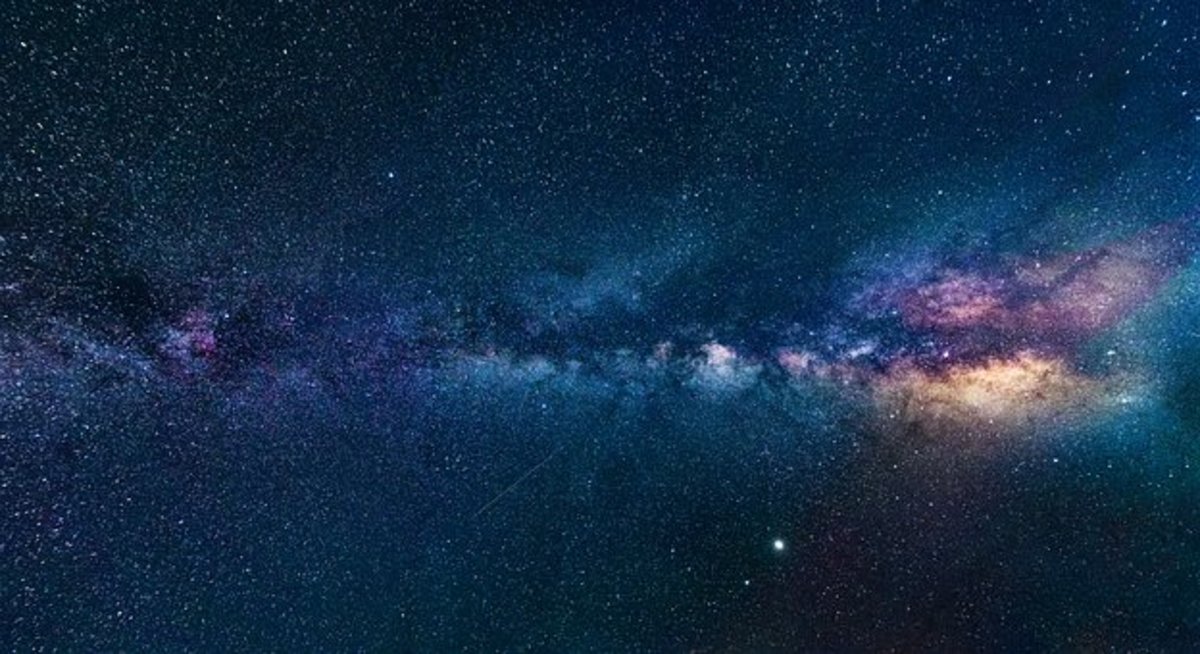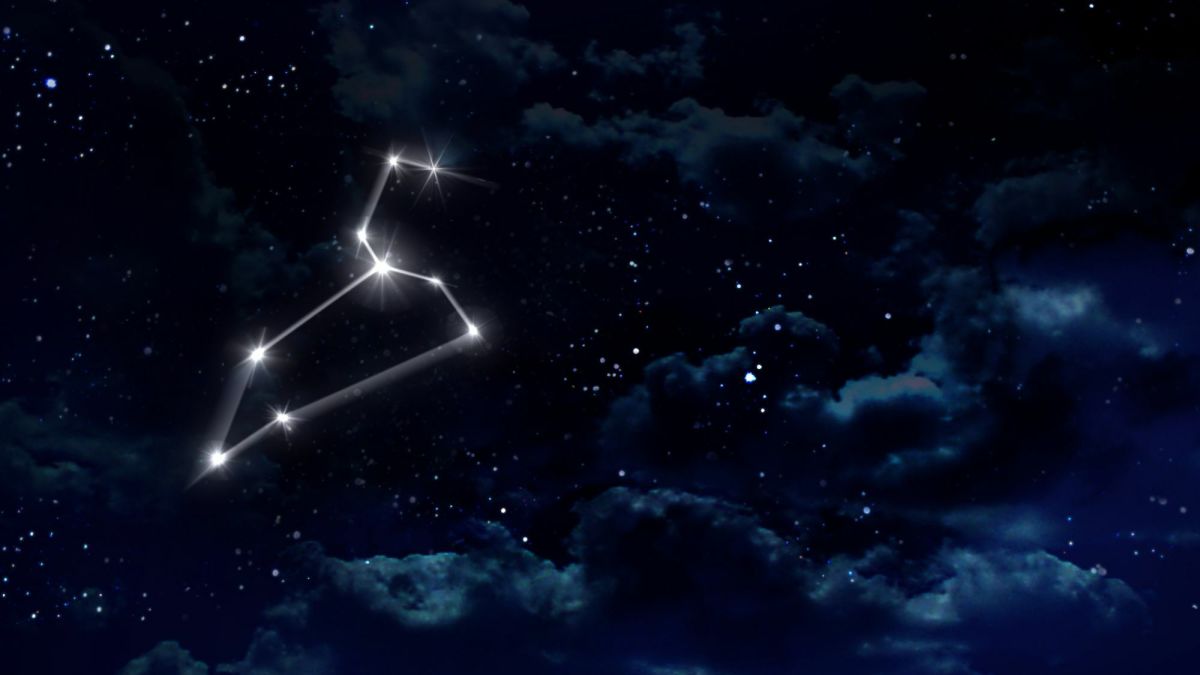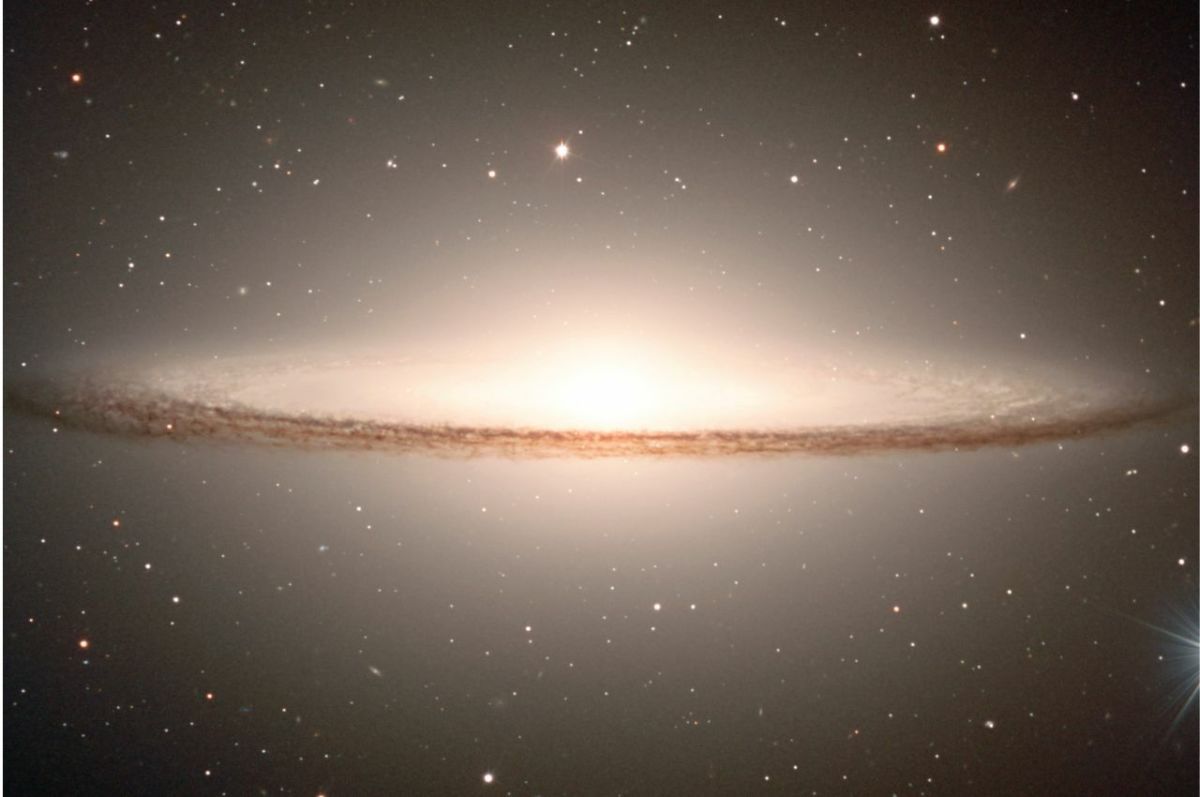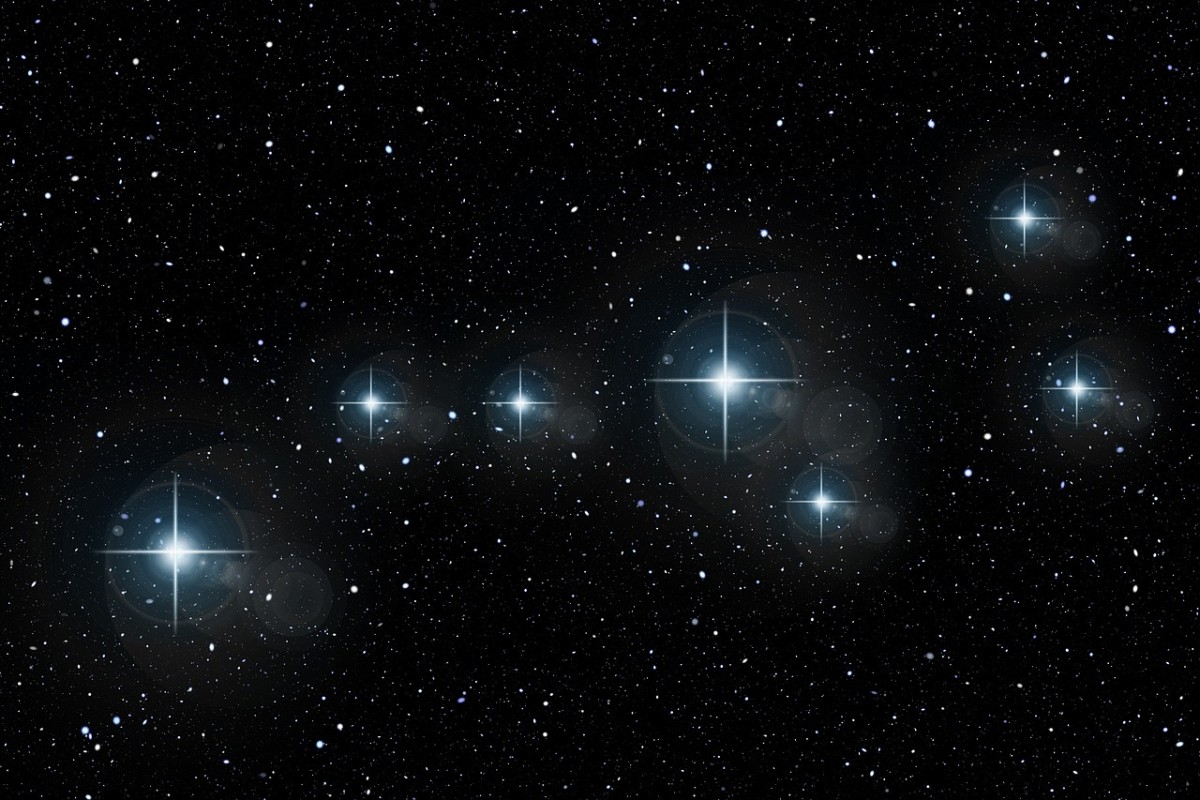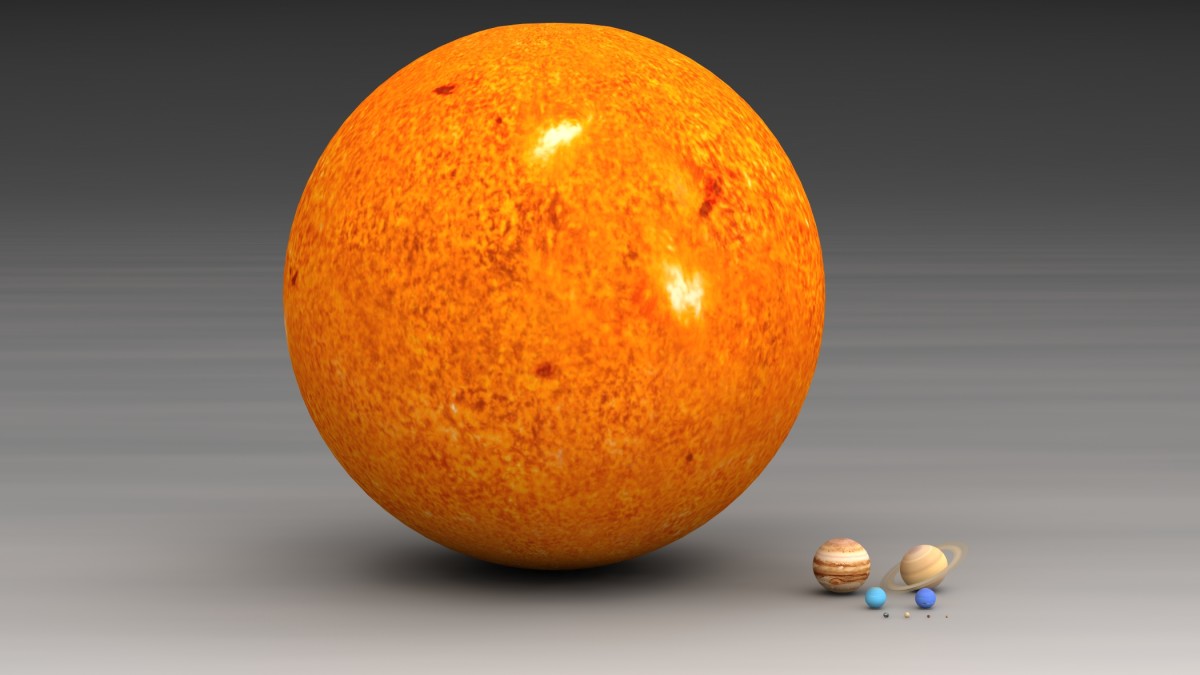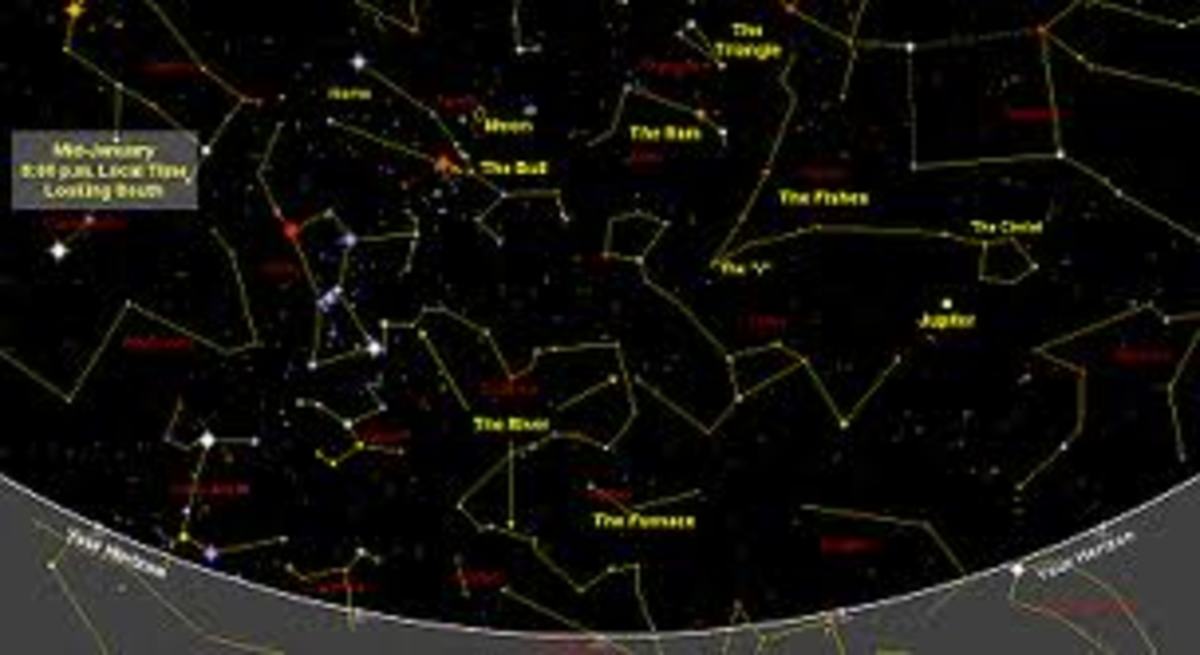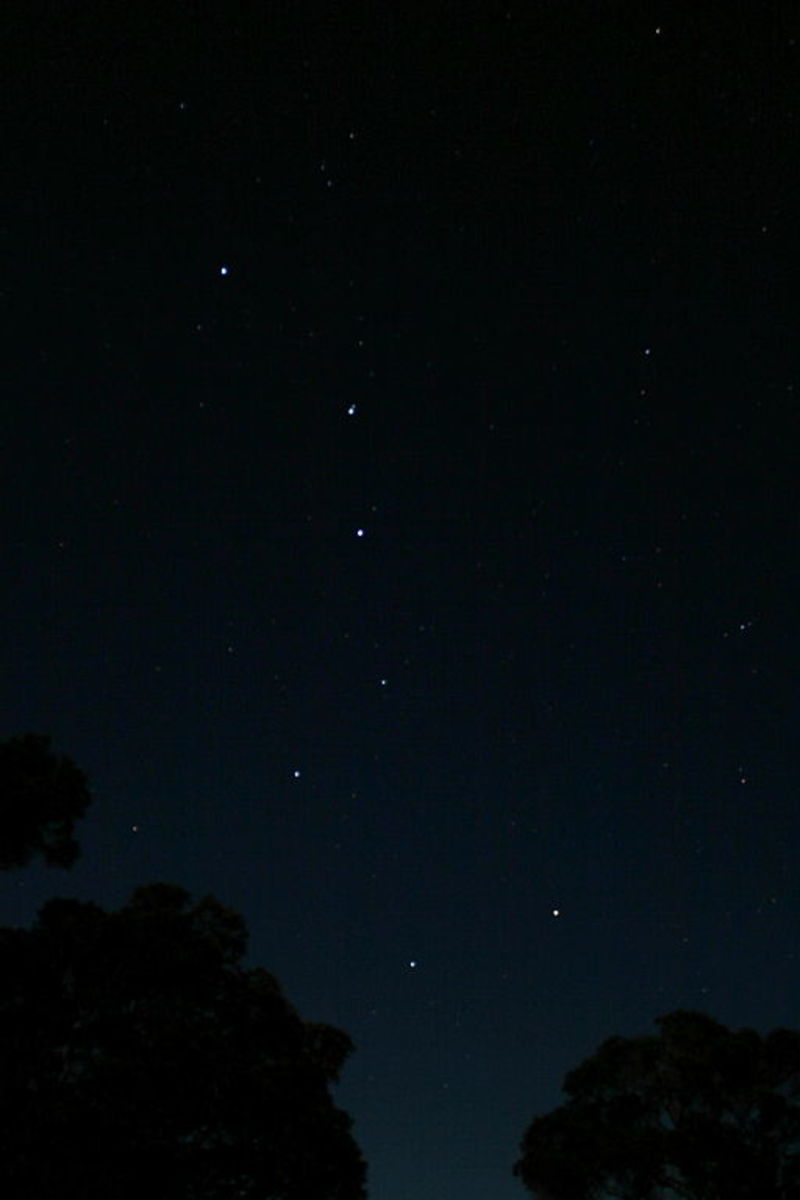Heavenly Bodies
Introducing Our Stars
Do you feel small when you look up at the night sky and see the vastness of the space around you? Our world is so tiny amidst the vast, endless universe. It seems too much to comprehend, yet there are those who have studied the skies intently throughout history. They are the sky gazers, scientists and astronomers of the past and present. Mankind's attempt to comprehend the observable universe through naked eye and telescope will continue into the future as long as our single nearby star, the sun, continues burning.
The night sky is an awesome sight, even in the city where the intensity of the multitude of stars is less brilliant. In areas away from the lights of the city, the stars seem to be jammed into the sky. However, outside the city, (the Mohave desert for instance,) the brilliance of the starry sky is overwhelming. The painting,"Starry Night," created by Vincent Van Gogh in 1889 reveals not only the brilliance of the night sky he was observing, but how it him made him feel as he painted it. Yet, Sir James Jeans, an English astronomer about 50 years earlier, had commented, "Put three grains of sand inside a vast cathedral, and the cathedral will be more closely packed with sand than space is with stars."1
Our earth is 93 million miles from the sun. The nearest stars are about 20 light years away. Their names are Proximo Centauri, Alpha Centauri A and Alpha Centauri B, Bernard's Star, Wolf 359, Sirius A, Sirius B, Epsilon Eridani, Epsilan Indi, 61 Cygni A, 61 Cygni B, Tau Ceti, Procyon A and Procyon B. (Anyone looking for a unique baby name?) A light year is the distance light travels in a vacuum in one year. At 186,000 miles a second, light travels 6 trillion miles a year. So, the closest stars are 20 x 6 trillion miles away, or 120 trillion miles away.
Our sun is one of 200 billion suns (stars) in our Milky Way Galaxy. Our galaxy is 150,00 light years across. It is in a Local Group of galaxies. The names of these galaxies are Draco, Ursa Minor, Small Magellanic Cloud, Large Megellanic Cloud, Sculptor, Formax, Leo 1, Leo 2, NGC 185, NGC 147, NGC 205, M32, Andromeda (M 31), M 33, IC 1613, NGC 6822. Photos taken by the Hubble Space Telescope shows this local group of galaxies to be mere blobs of light amidst thousands of other galaxies.
Except for the moon and the planets, every twinkling light we see from earth is a ball of churning gases. Millions of tons of hydrogen is fusing and creating gravity at the center of each star. The inward pull of hydrogen produces an outward flow of helium. This equilibrium of chemical exchange has been occurring for less than 5 billion years in our star, the sun. Our sun is considered a Main Sequence star based on the temperature of its surface. Main Sequence stars are in the prime of their lives due to the fact that they have only used a small percentage of the available hydrogen. Other Main Sequence stars, even though they are called Dwarfs, are twenty times bigger than the sun and 20,000 times brighter.
Besides Dwarfs, there are White Dwarfs, Red Dwarfs, Red Giants, and Supergiants. Red Dwarfs are the most common, but they shine less brightly than the other types of stars. Proxima Centauri, is the brightest Red Dwarf, due to the fact that it is the closest Red Dwarf to the earth. Earthlings will observe it shining for ten billion more years, even though it is at the end of its life cycle. White Dwarfs have the same mass as our sun, but are only the size of the earth. Nuclear fusion is no longer occurring in these stars. Other common stars are the Red Giants. These stars are orange to red in color and are larger and brighter than the Red Dwarfs. They have a mass which is similar to the sun, but feature a more expansive atmosphere. Super Giants are rare. They are the largest of all the stars. Rigel, a star in the galaxy of Orion, is visible from earth without the use of a telescope, due to the fact that it is 100 times the size of our sun.
Our sun is a single star. However most stars come in pairs, triples, or clusters. The nearest double star system is Alpha Centauri. Its two stars are visible through a telescope, but when viewed with the naked eye, they appear as a single star. Another double star system can be found on the handle of the Big Dipper. It includes Mizar and Alcor. Some double stars reveal different colors. For instance, in the constellation of Cygnus, one star has a yellow tinge and the other has a green tinge. Using a telescope enables you to see many other doubles including, Beta / Cephei, Gamma / Andromedae (one orange and the other blue) and Theta / Orionis (located in the Great Nebula in Orion.) Some double stars rotate around each other, such as, Gamma / Leonis. Within the Southern Cross, Alpha / Crucis shines the brightest. The star system known as Castor consists of six stars sharing a gravitational force.
Clusters of stars can occur in groups as large as a thousand. The most famous galactic Cluster is the Pleiades, or Seven Sisters which exists in the constellation of Taurus. One can see seven stars in this cluster without a telescope, but looking through a telescope reveals dozens of bluish stars twinkling in proximity. In the constellation of Sagittarius there is a galactic cluster known as M22 which was discovered in 1665. Most galactic clusters are located on the outside edges of galaxies. Omega/ Centauri can be seen without a telescope. Its' cluster contains hundreds of thousands of stars. The cluster, M13, observable in the contsellation of Hercules, is three thousand light years away and100 light years across. In Taurus, the Hyades cluster is one hundred fifty light years away.
Stars are born. Stars live out their lives. Stars die. Heinz R. Pagels, an American physicist who died in 1988, wrote, "Stars are like animals in the wild. We may see the young, but never the actual birth, which is a veiled and secret event."2 Stars are mysteriously created out of massive clouds of dust particles and gases moving through space. Their birth can be triggered by other events, such as the explosions of supernovas. They live their lives for about ten to sixty billion years, (depending on their size: the bigger they are, the longer they live) as Main Sequence stars. When they get old, they begin to run low on hydrogen. As they begin to run out of fuel, they expand and become brighter. As helium fuses into carbon these stars become red. "Currently", (everything we observe today happened long ago,) two dying stars can be observed. They are Arcturus and Aldebaran. They have become Red Giants. Mira is another Red Giant in the constellation of Cetus. When it expands, it is bright and can be seen without a telescope. When it contracts, its' brightness fades away and must be seen with a telescope. When our sun starts to loose fuel in several billion years, it too might contract and expand. Until then, all will be fine in our little solar system.
So, go ahead, look up at our stars and enjoy them on many levels, metaphysically, poetically and scientifically. Let them give you a sense of the endlessness of time, the immensity of existence and the awesomeness of our universe. After researching the stars, you'll discover there is so much more to learn. It really is too much to comprehend and the more you discover about the universe, the smaller you'll feel.
MLA
David H. Levy. Skywatching. (The nature company / Time Life Books) San Francisco, 1994.
1 Skywatching pg. 28
2 Skywatching pg. 32

